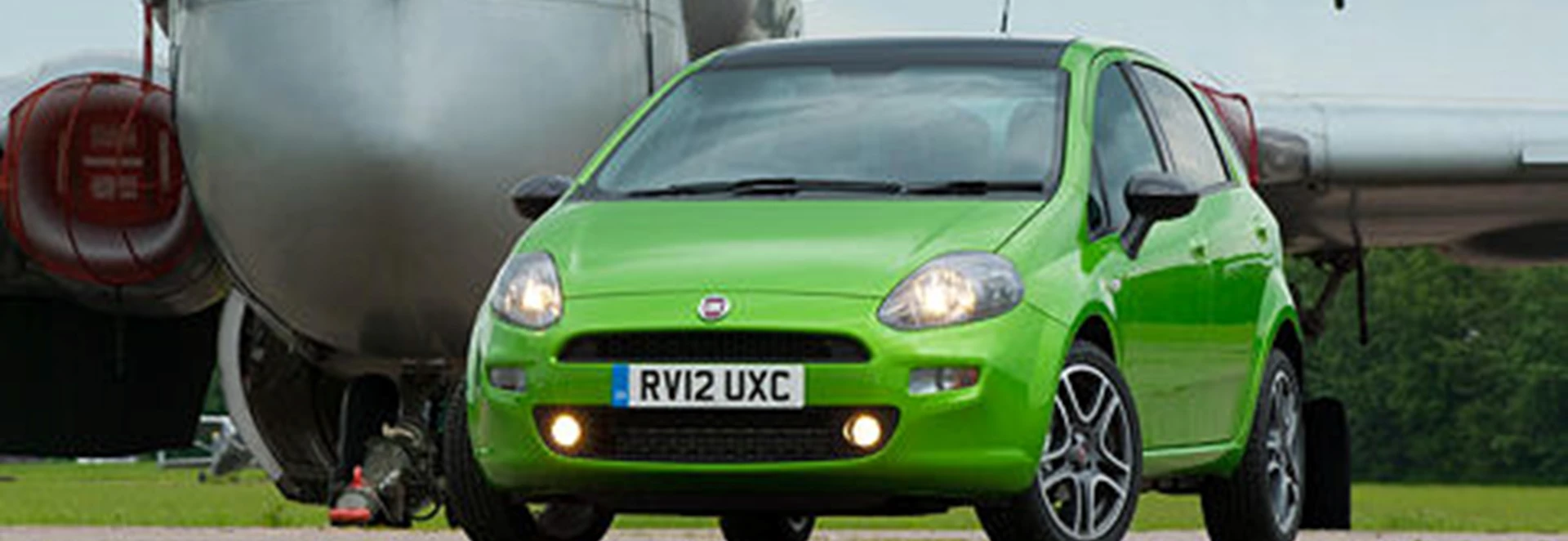Not much fuss has been made of it, but the Fiat Punto you can buy now is a new-for-2012 model, at least of a sort. The slight change of name - Fiat has gone from Punto to Grande Punto to Punto Evo and back to plain Punto in rapid succession over the past few years - might suggest something fairly radical, but according to the company this merely "matches the rationalisation of the look", which is slightly simpler than it was in the Punto Evo days.Interior and exterior changes are very modest and mostly to do with styling, though there are some exceptions. The rearmost Fiat badge no longer simply sits on the tailgate but now also opens it, which isn't original but is both neat and handy. There are new engines too, one of them being a diesel which we'll be discussing in the near future.The other is the 875cc two-cylinder turbo petrol TwinAir which first appeared in the 500 and is now spreading through the Fiat Group empire. It's not quite the greenest engine in the range, because the new diesel is, but official combined economy of 67.3mpg and CO2 emissions of 98g/km are not to be sniffed at, especially since the latter means that the car is exempt from Vehicle Excise Duty and the London congestion charge.I've driven several TwinAir-powered cars before, but the Punto is the first to benefit from what's known as a dual mass flywheel. I'll keep this brief: as you may know, the job of the engine is to turn the flywheel, and that turning motion is passed through the transmission to the road wheels. Normally a flywheel is a one-piece affair, but if it's dual mass it's made of two, which are connected by springs.Those springs absorb engine vibrations and stop them passing through the rest of the car. In the case of the TwinAir this is very important, since for all its delights it does vibrate quite a lot, and can sound as if it's struggling at low revs even though it's actually operating perfectly well. The dual mass flywheel reduces the temptation to keep the revs up, and I suspect it's going to have a big effect on real-world fuel economy for exactly that reason.TwinAir isn't just what the engine is called. For the Punto, as for the 500, Fiat has also used it as the name of a trim level which isn't quite the same as any other, though it's very close to the mid-range Easy. The most noticeable change is the addition of very sporty-looking wheels which, to me, don't sit easily with the high-profile tyres and large wheelarch gaps.I don't want to complain about the tyres or the ride height, though, because the TwinAir both rides and handles fabulously well. It's very soft but it doesn't wallow, and you can have as much fun with it as the 85bhp output of its engine will allow.The major controls aren't very precise, but they all feel about the same, and that's important. The steering is fingertip-light, though if you have a problem with it there's a City mode which makes it lighter still. I don't see the need for that myself, and you would definitely want to switch it off on a motorway, where a stifled sneeze could lead to an unexpected lane change if you weren't careful.Being structurally the same as the Punto Evo, the new car shares a couple of problems such as very poor rear three-quarter visibility (there are no rear side windows in the five-door) and exceptionally limited space for back-seat passengers. At six foot three it's perhaps not to be expected that I could sit behind a driver's seat set up for me to use, but in most superminis I can at least attempt it. Not in the Punto.The rear sill is very high, which might make loading heavy luggage into it difficult. Load capacity of 275 litres with the rear seats in place is less than you get in the Punto's most popular rivals, the Ford Fiesta and Vauxhall Corsa, but only by twenty and ten litres respectively.This isn't the best supermini on the market, but it's quite a good one. The styling revisions have made no difference to the fact that it's one of the most handsome contenders in its class, and among mainstream small cars there's hardly anything that provides quite so much fun along with a sub-100g/km CO2 rating. Engine 875cc, 2 cylinders Power 85bhp Transmission 6-speed manual Fuel/CO2 67.3mpg / 98g/km Acceleration 0-62mph: 12.7 seconds Top speed 107mph Price £12,700 Details correct at publication date

Our Rating



